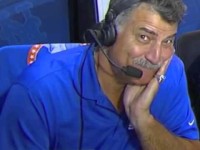Neil Walker

From what I gather from reading incorrect interpretations of the book, I take many people did not actually read Moneyball. If you haven’t, you should go and read it. If you have, now is the time to re-read it.
The reason to re-read it now is the script for the Mets postseason lies within those pages. I know Sandy Alderson was no longer the A’s GM at the time; it was Billy Beane. However, remember Beane’s top two lieutenants were J.P. Riccardi and Paul DePodesta. Until recently, they were Alderson’s top lieutenants. They were at least in place when the Mets were creating their offseason plans.
One of the many aspects of the book, which the movie seemed to get purposefully wrong, was how the A’s went about replacing Jason Giambi and one-year rental Johnny Damon. In essence, the A’s determined they flat out didn’t have enough money to replace these guys with other high priced players. Instead, the A’s were going to have to replace their production using a different line of thinking. I’m summing up here and being a little over simplistic, but here was the thought process:
- The team needed to identify what was undervalued on the free agent market (OBP);
- They needed the cumulation of their entire roster to replace Giambi and Damon since they couldn’t just sign two big name free agents to do it; and
- They needed to do it as cheaply as possible.
So what did they do? Well we know the Scott Hatteberg story with him being moved to first due to his traditionally high OBP (more on that later). In the movie and most other places, the story behind the David Justice acquisition is plain wrong. The A’s obtained him from the Mets, not the Yankees, in exchange for a LOOGY by the name of Mark Guthrie and a mistake waiting to happen by the name of Tyler Yates. It was the Mets, not the Yankees, who kicked in salary. It was only $1.2 million.
Now for the moves that haven’t received much fanfare. The A’s handed the secondbase job to a young Mark Ellis, who was capable of higher production than last year’s second baseman Frank Menechino. Menechino was moved to the bench to create a deeper roster. The A’s traded for Carlos Pena, who was a promising young player. Pena was supposed to be the first baseman with Hatteberg at DH and Justice in LF. That’s the way it was up until the trade deadline. They also traded for Billy Koch to sure up the closer’s role for the departed Jason Isringhausen.
By design, the A’s replaced Giambi and Damon not only with Pena and Justice, but by also improving their DH spot (Olmedo Saenz and Jeremy Giambi) and secondbase. In essence, the A’s added three new starters putting their old starters on the bench. The A’s left some payroll flexibility and had assets for the trade deadline.
The A’s used Pena in a three way trade to acquire Ted Lilly to sure up the rotation behind their three young big pitchers. They then used a prospect to acquire Ray Durham to DH with some needed cash. Hatteberg moved to be the full time first baseman. And yes, like in the movie, the A’s also added Ricardo Rincon to be the LOOGY to sure up the bullpen.
Did it work? If you look at the record, it absolutely did. They went from a 102 win team to a 103 win team. However, the reason wasn’t Hatteberg or Rincon. No, the part we forget is Barry Zito won the Cy Young, and Miguel Tejada win the MVP. They were powered by an insane 20 game winning streak. Lost in that streak was the A’s played only one team over .500 and played two teams that lost over 100 games that year.
The 2002 A’s got top notch performances from their top guys, and they made sure to beat the teams they were supposed to beat. Make no mistake. The 2002 A’s were worse. They scored 84 less runs and allowed nine more runs. However, at the end of the day, it didn’t matter. They won one more game.
The Mets are in a similar position as the A’s were. Make no mistake about it, the Mets have limited funds. With those funds, they needed to go out and replace the production of Daniel Murphy and a half a season of Yoenis Cespedes. Last year, Murphy hit .281/.322/.449 with 14 homers and 73 RBI. Cespedes hit .287/.337/.604 with 17 homers and 44 RBI in his time with the Mets.
We already know how the Mets replaced that production. They traded for Neil Walker, who hit .269/.328/.427 with 16 homers and 71 RBI. He’s a career .272/.338/.431 hitter. The Mets then decided to go with a platoon in center. There is in-house option Juan Lagares to hit against lefties. He hit .273/.333/.438 against lefties last year and .279/.325/.427 for his career. Platooning with him is Alejandro De Aza, who hit .278/.351/.448 against righties last year and .274/.338/.418 for his career. Now, this isn’t enough to replace the production of both of Murphy and Cespedes.
That’s where Asdrubal Cabrera comes in. Last year, Wilmer Flores played the bulk of time at shortstop hitting .263/.295/.408. Ruben Tejada played a lot there hitting .261/.338/.350. The Mets hoped by signing Cabrera they have significantly upgraded the position to cover the loss of Murphy and Cespedes. Cabrera hit .265/.315/.430 last year with the Rays. Speaking of replacing Cespedes’ second half production Cabrera hit .328/.372/.544 in the second half last year. Tangentially, the bench is theoretically better by having Flores and Tejada there.
Following the script they invented in Oakland, the Mets have already done what they believe they needed to do to replace the production they have lost. Right now, the Mets projected payroll is ~$106 million or about $4 million less than the 2015 payroll. Accordingly, the Mets are maintaining payroll flexibility like the A’s did so they can make trades at the deadline.
And, by the way, the Mets are powered by their three big young starters. How will it work out in 2016? We don’t know yet. However, if history is any lesson, the 2016 Mets will be worse than the 2015 version. If they want to have a better record, the 2016 Mets will need to take advantage of their games against bad teams like the Phillies and Braves. One of the young pitchers will have to step up even more. We’ll see which everyday player can step up to have the Tejada-like season.

MLB is doing this new thing when a notable player joins a new team, they have them fill out a questionnaire so the fans get to know them better. For example, did you know Neil Walker‘s favorite baseball movie is Field of Dreams? Well, I’m sure he will now replace Daniel Murphy as a fan favorite.
I’m joking of course. I think it’s a good idea. For some people, getting to know a player makes you more emotionally invested. That’s a good thing. Speaking of Murphy and new teams, here’s his answers to the Nationals questionnaire:

He’s right, there is so much poop. Infants are popping machines. Luckily, when they’re infants it doesn’t smell so bad do you can keep it in your Diaper Dekor. For the uninitiated, the Diaper Dekor is a device designed to let you keep your child’s poop sitting in the house until either: (1) the bag fills up; or (2) it starts to smell. By the way, you’re exhausted when you have an infant. You will be willing to push those boundaries especially when the diaper changes are so frequent.
The worst poops are the first ones. The meconium poops. It’s this thick tar like bowel movement that gets on and sticks to everything. It doesn’t smell. It just gets onto everything just sticking to it and staining it. It lasts much shorter than you believe it does, but it does create havoc.
It reminds me of when I first gave my son a bath when we brought him home. By the way, the Blooming Bath is awesome. Anyway, I very carefully have my son a bath. I was more careful than a leper in a soup kitchen (his name is Stew by the way). I handled my son like he was nitroglycerine, and I was walking through a minefield on crutches. You get the picture. I was so proud of myself. When you’re a first time parent, everything is an accomplishment. Even your own ability to wake up in the morning and function like a member of society.
I turned around and started heading to the changer with my son, and then I got my reward. Meconium all over my favorite Gary Carter t-shirt. I tell you this younger generation doesn’t respect the greats in baseball history.
Anyway, I just remembered standing there with this poop dripping down my shirt. I was trying to hold my son, while supporting his neck and allowing him to continue to pool all over me. I’d be lying if I didn’t say I was trying to angle his butt away from me so he didn’t continues to poop on me and so I wouldn’t have to redo the bath. When he was done, I knew I couldn’t go from tile to carpet. I was somewhat delirious from the lack of sleep, but I knew that much. So, I did then what every strong man does when he’s in a situation he can’t solve.
I called out to my wife, “Help! I don’t know what to do!” She came over and did what all supportive wives do. She laughed at me. She then cleaned up the mess. For the rest of the night, she mocked me for it. It was a story she told everyone when they came to see the baby. I was the butt of the joke. Get it?
In any event, I remembered using Dreft for only God knows how many cycles before finally getting the stain out. Trust me, at some point everything you own will be covered in poop. You can’t buy a new wardrobe. Stop judging me. In any event, that’s what came to mind when I saw Murphy’s answers to the questionnaire.
Just “so much poop.”
Editor’s Note: the products referenced were not paid advertisements. They were products we actually used.
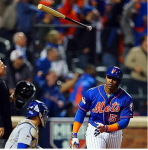
After the Mets signed Alejandro De Aza, the Mets fans realized the team was breaking its promises, and they became angry. They came to the realization that the team was not going to increase payroll, at least not significantly, after attendance increased.
Right now, I could remind everyone of the Mets great starting pitching in an attempt to calm everyone down. However, I don’t think it’s that time. Honestly, the fans need to be angry with the team lying to them. The team needs to answer questions why ticket prices increased while the payroll was decreased. The only way I truly know how to make that happen is to tell everyone the Mets punted on Yoenis Cespedes.
Cespedes is projected to receive a contract around $21.5 million per year. Jason Heyward signed a deal worth approximately $23 million a year. If you assume Heyward was the top free agent, the $21.5 million is a good approximation.
We know Michael Cuddyer. We don’t know if he received a buyout. He was due to make $12.5 million. De Aza just signed for $5.75 million, and he can earn up to $1.25 million in incentives. That’s potentially $7 million. Collectively, that’s potentially $19.5 million.
That’s right. The De Aza signing really did cost the Mets Cespedes. The money saved in the series of transactions starting with the Neil Walker trade and Cuddyer retirement wasn’t used to get the power bat the Mets need.
Yes, I don’t think the Mets should re-sign him. However, I do think they should’ve used the money to improve the roster. They haven’t done that. For me, I thought the Mets should’ve created a lockdown bullpen while bringing back Daniel Murphy. For others, it’s Cespedes.
For the Mets, it was pocketing the money while bringing on De Aza.
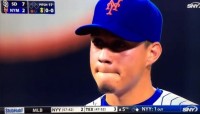
Going into the 2015 season, the Mets told everyone they were comfortable with Wilmer Flores as their shortstop. Going into this offseason, the Mets reminded everyone they made the World Series with Flores as their shortstop. As it turns out the Mets don’t regard Flores as anything more than a bench player.
With Daniel Murphy being a free agent, the Mets had the option to do the following with Flores: (1) leave him at shortstop or (2) move him to secondbase. The secondbase option became more viable when Ben Zobrist became a Cub. Instead the Mets traded for Neil Walker. After that, they signed Asdrubal Cabrera. In about a 34 hour timespan Flores went from starting middle infielder to a bench player.
Simply put, the Mets gave up on him. They gave up on a 25 year old baseball player they seemed to really like. They gave up on the idea that a hard worker like Flores would improve. Make no mistake, this has more to do with Flores’ bat than it has to do with his glove. It’s surprising because it was Flores’ bat that earned him the opportunity to play in the big leagues.
Simply put, while Flores showed some power, he was not very good at the plate. Last year, he hit .263/.295/.408. Walker hit .269/.328/.427. Cabrera hit .265/.315/.430. As an aside, Murphy hit .281/.322./.449. Seems important to mention since the Mets were making offensive and not defensive upgrades.
Last year, Flores had a UZR of 2.0 at secondbase and -2.5 at shortstop. Walker is coming off consecutive -6.8 UZR seasons at second. Here are Cabrera‘s UZRs at short since 2009: -5.0, -5.5, -11.0, -7.7, -12.8, -6.6, -6.0. Look at those numbers again. I know it’s hard for Mets fans to accept, but Flores is a better defender than Walker and Cabrera.
The reason it’s so hard is the early season troubles Flores had. He had trouble turning the double play. He had trouble making a play off his backhand. Here’s the thing. Remember the NLCS and World Series? Did either of those issues arise once? No. He was very solid at short, even if it was a limited sample size.
Ultimately, the Mets made these moves because of Flores’ offense, not his defense. They made these moves because they lost faith that Flores could ever improve enough to be an everyday player. Yes, they gave up on him being an everyday player. When you move a 25 year old to the bench, you’ve given up on him. You’ve given up on him when you bring in two weaker defenders in their 30s.
The Mets made these moves to improve their offense. It’s up for debate m as to whether it was the right move. What is not up for debate is the Mets giving up on Flores. It’s pretty clear that they did.
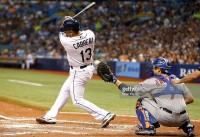
If you’ve read Andy Martino’s Winter Meetings article, there’s a lot to digest. There’s many ways to go, but first I wanted to address the Asdrubal Cabrera situation.
As you well know, the Mets acquired Cabrera. Depending on your point-of-view, Cabrera may or may not be an upgrade at shortstop. He’s a weaker defender. You’re relying on a good second half being a sign that he’s ready to overcome his struggles of the past five seasons. For all that, the Mets signed him to a two year $18.5 million contract. It’s a contract that might’ve depended on what Ben Zobrist did.
Supposedly, the Mets were willing to sign Zobrist to a four year $60 million contract. That would’ve been an average annual value of $15 million per year. This is what the Mets conveyed to Zobrist’s agent, Alan Nero, who coincidentally represents Cabrera. The Mets talked about both players with the agent. However, pay careful attention to this quote:
Before Zobrist made his decision, [Assistant GM John] Ricco felt he had to approach the pursuit of Cabrera delicately. The Mets needed to appear interested, but not so much that Nero thought they were turning away from Zobrist. Now, with that barrier lifted, Ricco and his group go hard after Cabrera, offering a two year, $18.5 million deal, and landing him that night. The process is simple: Will you take our money? Yes? Great, we have a deal.
I’m sure there are a number of ways to reasonably interpret that statement. Personally, I interpret it as the Mets didn’t have $24+ million in their budget, at least not for the middle infield. From the beginning of their conversations, Cabrera was a fallback option.
As Mets fans, we were informed if attendance increased than payroll would increase. Well, attendance increased. As a result, the Mets revenue increased somewhere between $45 – 60 million. Now, before the Mets made any moves, their projected payroll was going to be around $92 million. Adding $24 million to the middle infield would’ve increased the payroll to $116 million.
Keep in mind with that $116 million payroll, the Mets infield and rotation would’ve been locked down. You could’ve justified not pursuing a Yoenis Cespedes because you would’ve shown to everyone, let alone your fan base, that:
- The Mets were willing to outbid everyone to get the most coveted free agent on the market;
- You were willing to spend to address what you saw as a position of need; and
- You would’ve actually increased the payroll.
After having minimum $45 million in extra revenue, Cabrera should not have been contingent on Zobrist. The Mets should’ve been able to bring in both players. Either they are still facing budget constraints from the Madoff scandal, or the team doesn’t feel compelled to have a league average payroll despite whatever promises were made.
In any event, the Mets fans have been lied to by this team. It’s not alright. Attendance and revenues significantly increased. There will be a modest increase in payroll. This should make you question everything they do this offseason. Was Neil Walker really an improvement over Daniel Murphy, or is the team just selling that to us? Did the Mets trade Jon Niese because it was a reasonable deal, or was it because they needed to shed some payroll to have enough room for Walker and Cabrera?
I just look forward to the next free agent move, if there will be one. I’m curious how they’ll sell it to the fans. I wonder how much there’s left in the budget. These questions are more than reasonable and fair after reading this article.
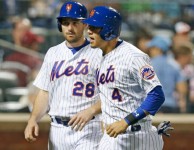
While reading up on my nightmare scenario of Daniel Murphy signing with the Nationals, I noticed something interesting. Look at this blurb from MLB Trade Rumors:
At the time of this writing [December 16, 2015], it’s not exactly clear who the leading teams are for the infielder, who turns 31 in April. The incumbent Mets apparently haven’t ruled out a reunion with Murphy, though they would like to sign him to a one- or two-year deal.
(Emphasis added, internal links omitted)
It’s a fascinating scenario. By reintroducing Murphy to the mix, you’re creating even more infield depth and even more versatility. With Neil Walker‘s platoon splits, Murphy can effectively platoon there. When David Wright needs to rest his back, Murphy can play there. Murphy can also play some first base allowing Lucas Duda to sit occasionally against the really nasty lefties.
Sure, you could argue he’s usurping Wilmer Flores‘ role. However, Murphy is a much better player. You’d rather have Murphy playing over Flores. Furthermore, that frees up Flores to focus on SS and possibly work on learning the OF to give Curtis Granderson and Michael Conforto the occasional day off, especially against lefties.
The move makes sense except for the following reasons:
- You’re asking Murphy to accept a reduced role and contract;
- You’re expecting Walker to accept a reduced role in a contract year; and
- You’re expecting Flores to be an effective MI and corner OF.
Unfortunately, it seems like the rumor was outdated. It was before the Mets obtained Walker. It seems unlikely Murphy will return to the Mets. I got excited for a minute until I realized it wasn’t realistic. Upon further review, it wasn’t.
However, it would’ve been interesting.
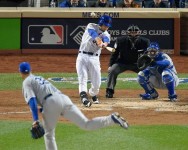
There are many out there calling the Mets offseason a success so far. Personally, I don’t see it. Yes, I know the offseason isn’t over, but we’re also pretty sure the Mets aren’t replacing Yoenis Cespedes‘ bat.
Overall, the Mets as constituted now are not better than the team that lost the World Series. Here was the lineup for the team that just lost the World Series, with their respective WAR from the 2015 season:
- Curtis Granderson 5.1
- David Wright 0.5
- Daniel Murphy 1.4
- Yoenis Cespedes 6.3
- Lucas Duda 3.0
- Travis d’Arnaud 1.7
- Michael Conforto 2.1
- Wilmer Flores 0.8
Combined 20.9
If the Mets make no other additions this offseason, which still remains a possibility, here’s the Mets 2016 starting lineup with the player’s WAR from last year.
- Curtis Granderson 5.1
- Neil Walker 2.4
- David Wright 0.5
- Lucas Duda 3.0
- Asdrubal Cabrera 1.7
- Michael Conforto 2.1
- Travis d’Arnaud 1.7
- Juan Lagares 0.6
Combined 17.1
On paper, barring any further additions the 2016 starting lineup is worse than the 2015 World Series team. This is despite how more “athletic” the Mets are in the middle infield. In response, the argument is the Mets are now deeper. Are they? Let’s compare the 2015 and 2016 benches.
Before comparing, it should be noted I’m going to use a traditional 13 position players and 12 pitchers split. That means I will have to eliminate once bench player from the 2015 Mets. I’m choosing to remove Kirk Nieuwenhuis from the roster as he was called up in September.
I’m also dropping Juan Uribe from the 2015 roster. When building a team, you’re going to want a backup shortstop. Uribe doesn’t fit the bill. Since Ruben Tejada was injured, and thus unavailable, I’m replacing him with Matt Reynolds, whom I’m assigning a 0.0 WAR since he didn’t play at all last year.
Here’s the modified 2015 World Series bench:
- Kevin Plawecki 0.9
- Matt Reynolds 0.0
- Michael Cuddyer 0.5
- Kelly Johnson 0.3
- Juan Lagares 0.6
Combined 2.3
Here’s the current bench, which would be subject to change with a free agent signing:
- Kevin Plawecki 0.9
- Wilmer Flores 0.8
- Ruben Tejada -0.1
- Kirk Nieuwenhuis 0.7
- Eric Campbell -0.5
Combined 1.8
Now to be fair, the 2016 bench will mostly likely not have Eric Campbell on the Opening Day roster. Eliminating his -0.5 would balance out these benches.
Here’s one big problem, if not Campbell then who? Let’s assume Mets fans get their way, and the team signs Denard Span. Span had a 0.7 WAR last year. Yes, that’s the same as Kirk’s. Slotting Span into the everyday lineup has this effect:
- Starting Lineup WAR increased from 17.1 to 17.2
- Bench WAR decreased from 1.8 to 1.7
- Eric Campbell or Kirk Nieuwenhuis is still on the Opening Day roster
Now, first counter-argument will be the offseason isn’t over, so the Mets can still make additional moves. Currently, without any other moves, the Mets payroll stands around $105.7 million. Let’s assume for arguments sake, the Mets have around $10 million to spend. With that $10 million, the Mets are looking to add a reliever, a CF, and another bat.
Span is estimated to receive about $12 million a year. Well, that blows the whole budget. Even assuming the Mets could get Span for less, they’re not going to have enough money for a reliever and another bat after that. So again, chances are either Campbell or Kirk will be in the Opening Day roster.
The next counter-argument is last year’s WAR doesn’t account for full years from Wright, d’Arnaud, or Conforto. This point-of-view is acceptable. However, you also have to acknowledge Granderson may be due for a regression at 35 years of age with a repaired torn ligament in this thumb. Also, based upon their histories, you can’t rely on Wright or d’Arnaud to last a full season. Essentially, while you can expect some players to improve or play more often, you can expect others to regress and/or suffer injuries.
Overall, the Mets still might be able to win the NL East and return to the playoffs in 2016. They will do so because of their pitching. However, objectively speaking, you have to admit the 2016 Mets are and will be weaker than the 2015 Mets team that lost the World Series.
That is unacceptable.


